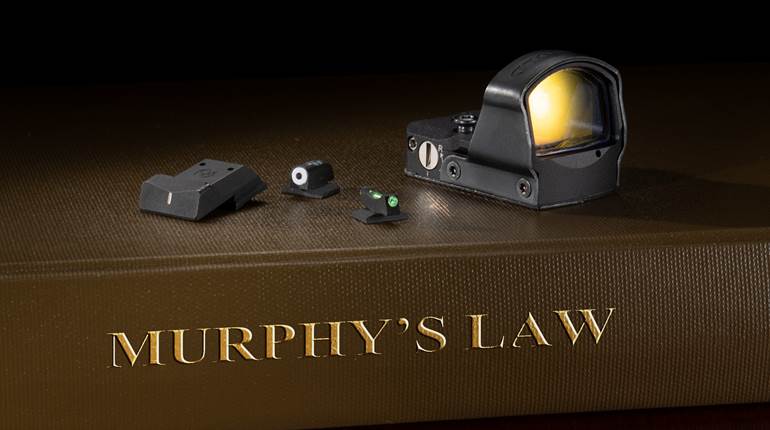
Within the world of Olympic competition arms, Hammerli is one of the great names that, sadly, has faded into relative obscurity, along with the once-dominant sport of international pistol competition. Both the company and the discipline had their roots in the 19th century, though Hammerli started earlier and continues its existence today, albeit wrapped within the Umarex family of firearm manufacturers.
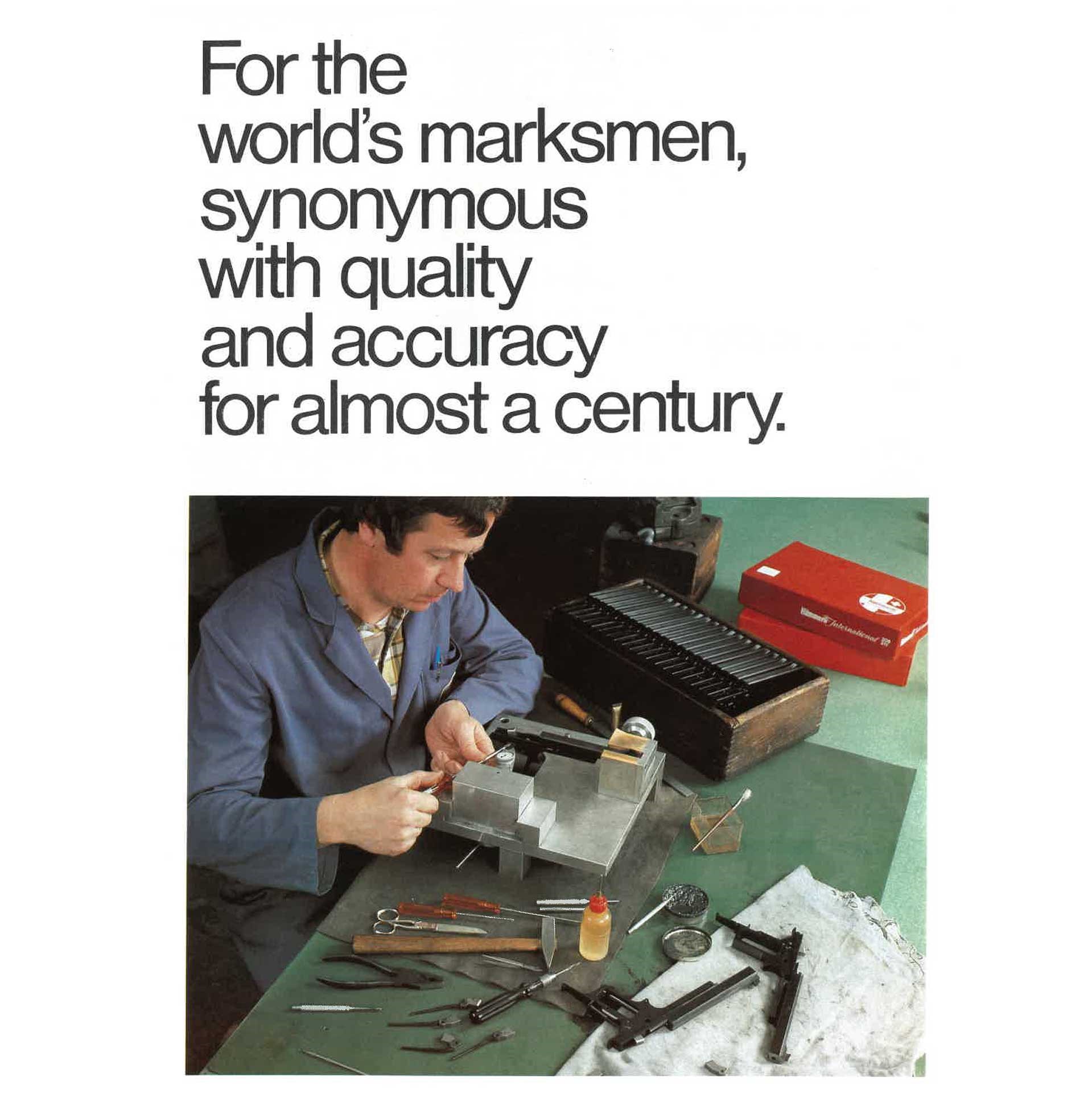 Little information is readily available regarding the early years of Hammerli, although it is recorded that Johann Ulrich Hammerli, the company’s founder, began production in Switzerland in 1863, initially producing rifle barrels for the Swiss army. By the mid-1870s, the company was known as Hammerli & Hausch and had commenced production of target rifles for the commercial market. By the early 1880s, Hammerli obtained the rights to Friedrich von Martini’s falling-block action design, a mechanism widely known for its use in the British Martini-Henry single-shot military arm. The falling-block action would be a signature of Hammerli’s single-shot target actions for nearly another century.
Little information is readily available regarding the early years of Hammerli, although it is recorded that Johann Ulrich Hammerli, the company’s founder, began production in Switzerland in 1863, initially producing rifle barrels for the Swiss army. By the mid-1870s, the company was known as Hammerli & Hausch and had commenced production of target rifles for the commercial market. By the early 1880s, Hammerli obtained the rights to Friedrich von Martini’s falling-block action design, a mechanism widely known for its use in the British Martini-Henry single-shot military arm. The falling-block action would be a signature of Hammerli’s single-shot target actions for nearly another century.
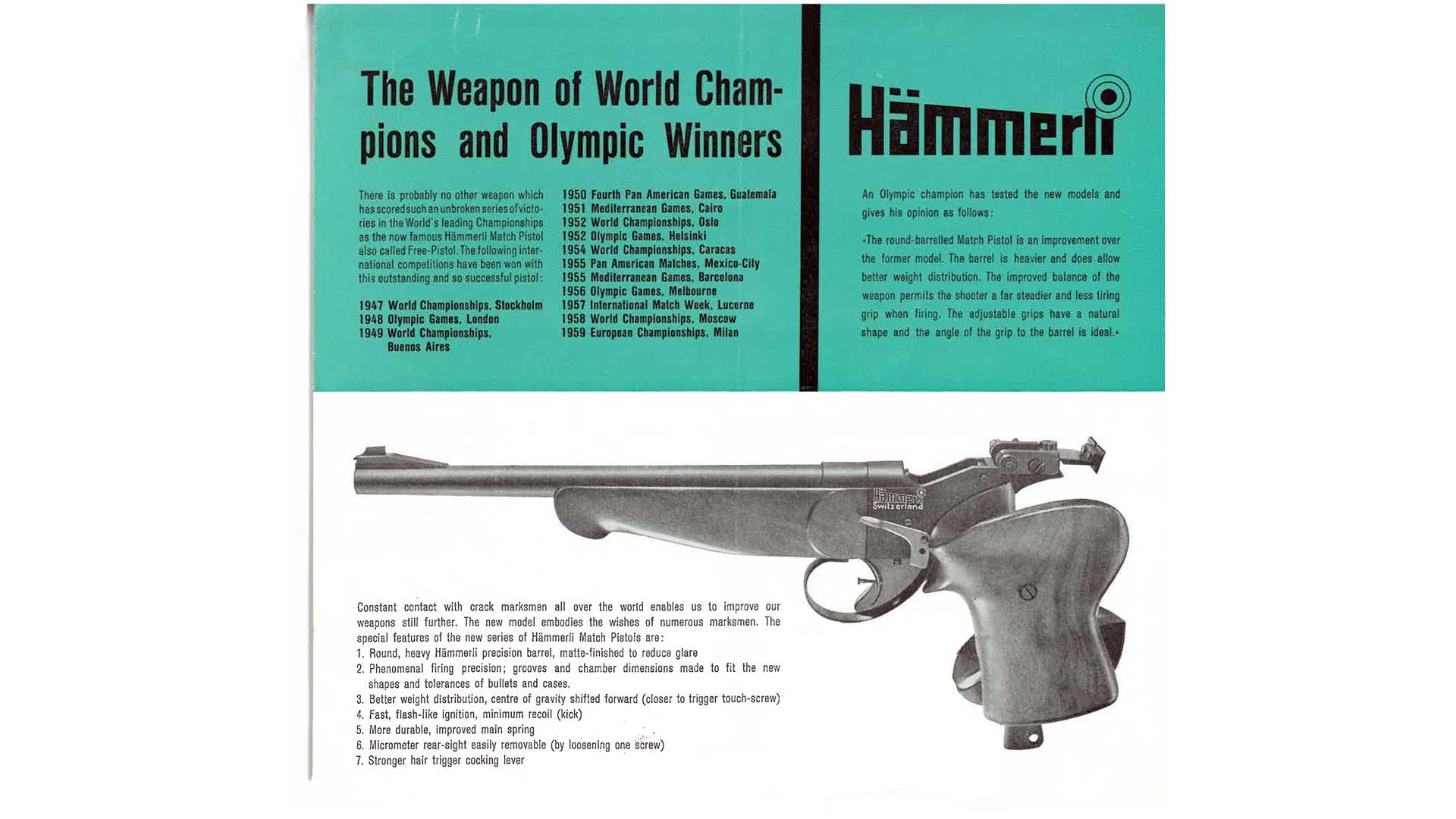
Hammerli sold its Model 100 using the above advertisement, touting the gun's use in dozens of international competition wins.
By 1921, the Hausch was dropped from the company name, and Hammerli continued production of target rifles, including making .22 Long Rifle-chambered variants of the Swiss K31 service rifle for training use. Concurrently, by the inter-war years, the sport of competition was growing in popularity, so much so that handgun manufacturers began to tailor models for competition use. In the first two decades of the 19th century, Colt’s Woodsman remained a popular option for handgun competition, but by the 1930s, Walther had begun to claim market share with its Olympia. Notably, by 1936, the Walther Olympia gave competitors the option to add weights to their handgun, thereby shifting balance and positively affecting recoil. The coming calamity of World War II would hinder Walther’s growth in the commercial market and provide room for Hammerli to claim a place in the post-war competition world.
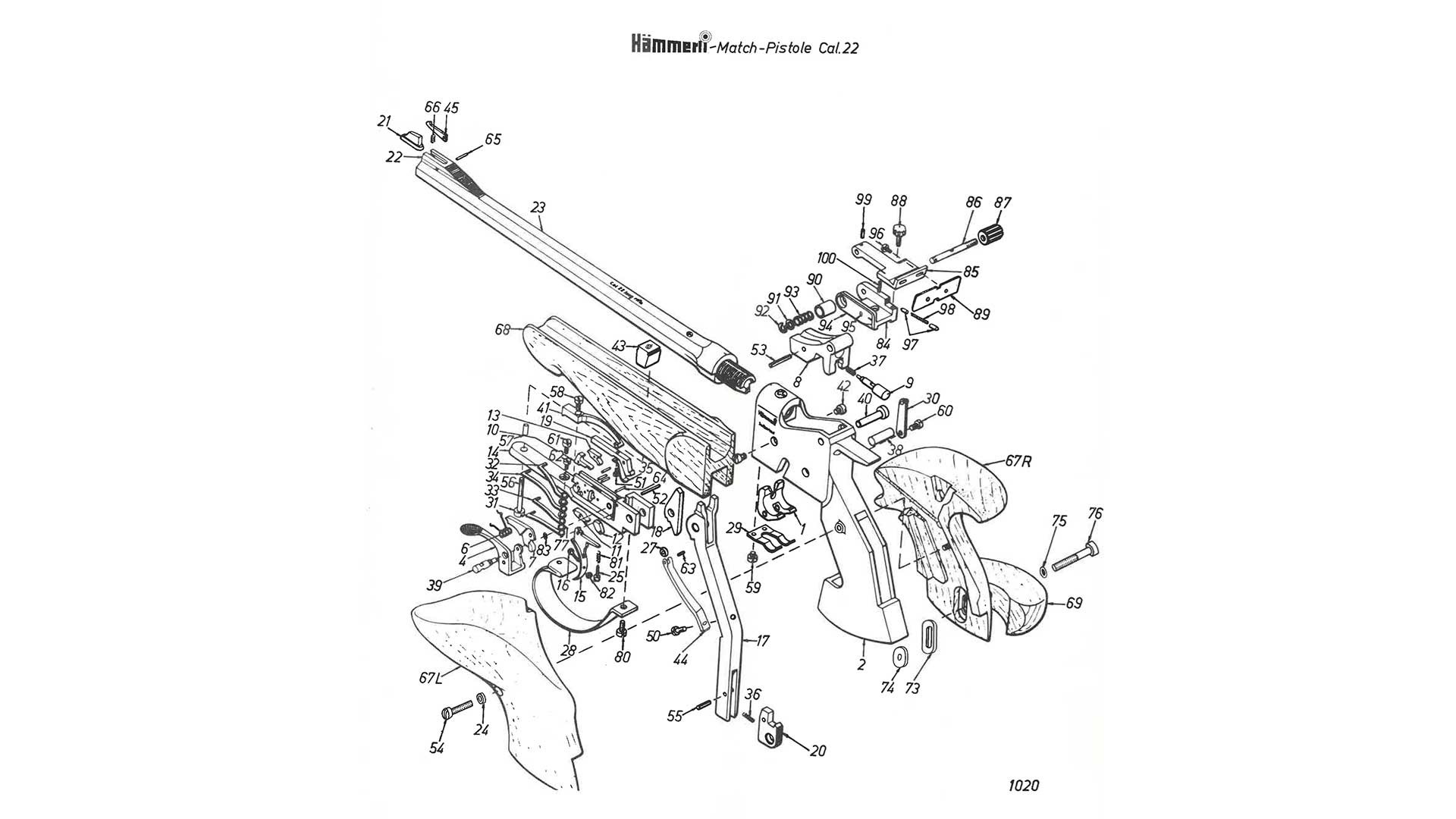
When international handgun competitions restarted after the conflict, Hammerli offered a single-shot target pistol based on a small Martini action called the MP 33, later named the Model 100. Additionally, with Walther’s production capabilities destroyed by the war and the subsequent acquisition of its factory by the Soviets in East Germany, Hammerli began producing a licensed copy of Walther’s pre-war Olympia. Both models were aimed at national and international free pistol disciplines. As the 1950s dawned, Hammerli improved its single-shot action with Model 101 and Model 103 versions of its Model 100, which offered variations on metal finish, barrel profile and trigger adjustments. In marketing material submitted to American Rifleman in 1961, Hammerli still touted the successes of international competitors outfitted with its Model 100 design, including wins at the 1948, 1952 and 1956 Olympic Games.
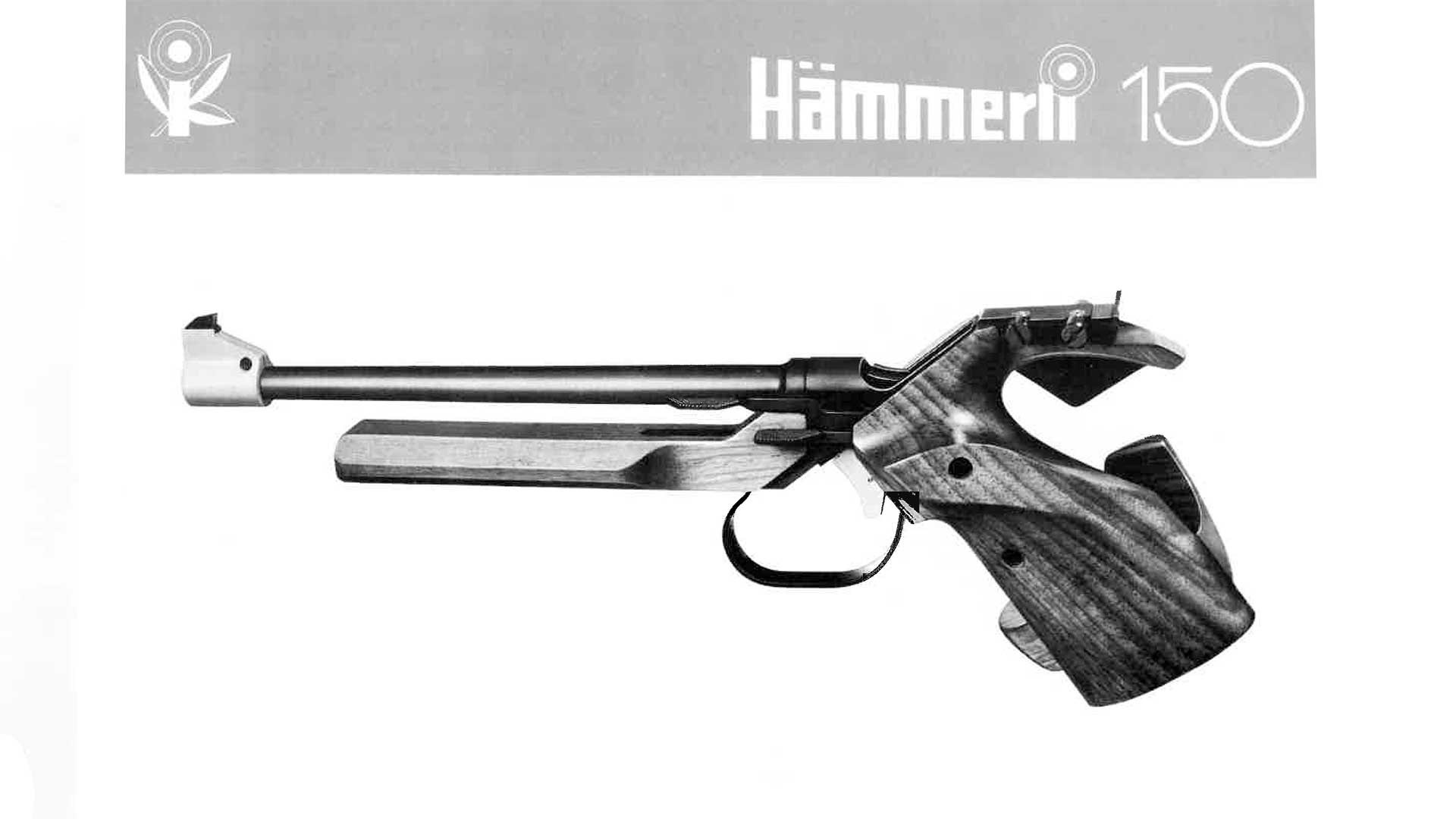 Chambered in .22 Long Rifle, the Model 100 Match Pistol was outfitted with grips carved from hand-selected walnut, shaped to fit “the average hand.” A vertically adjustable hand plate allowed for customization. At the rear of the receiver was a micrometer-adjusted rear sight leaf, which moved the point of impact ¼ of an inch at 50 yards for each click. The sight hung off the back of the receiver, increasing sight radius to an impressive 15”. At the front, a ramp provided the foundation for a thin front sight blade, measuring 1/10 of an inch in width. At the heart of the design was its “5-fold transmissioned set-trigger,” a design that could be adjusted to within fractions of an ounce. A touch screw protrusion enabled competitors to ensure precise pressure at an exact point on the trigger face for consistency.
Chambered in .22 Long Rifle, the Model 100 Match Pistol was outfitted with grips carved from hand-selected walnut, shaped to fit “the average hand.” A vertically adjustable hand plate allowed for customization. At the rear of the receiver was a micrometer-adjusted rear sight leaf, which moved the point of impact ¼ of an inch at 50 yards for each click. The sight hung off the back of the receiver, increasing sight radius to an impressive 15”. At the front, a ramp provided the foundation for a thin front sight blade, measuring 1/10 of an inch in width. At the heart of the design was its “5-fold transmissioned set-trigger,” a design that could be adjusted to within fractions of an ounce. A touch screw protrusion enabled competitors to ensure precise pressure at an exact point on the trigger face for consistency.
 By the 1970s, Hammerli had redesigned its award-winning Model 100, releasing the Model 150 for commercial sales in 1973. At its core, the Model 150 still retained the single-shot, falling-block Martini action, but the new design notably featured a lower bore axis, ability to add weights in the fore-end for an adjustable balance point and a new hair trigger. The pistol also incorporated a free-floated barrel for improved accuracy, ditching the attached fore-end found on the Model 100. While marketing material for the earlier Model 100 described the gun’s features in terms of inches, yards and pounds, by 1973, Hammerli marketed its pistol to an international cadre of competitors with measurements in millimeters and weights in grams.
By the 1970s, Hammerli had redesigned its award-winning Model 100, releasing the Model 150 for commercial sales in 1973. At its core, the Model 150 still retained the single-shot, falling-block Martini action, but the new design notably featured a lower bore axis, ability to add weights in the fore-end for an adjustable balance point and a new hair trigger. The pistol also incorporated a free-floated barrel for improved accuracy, ditching the attached fore-end found on the Model 100. While marketing material for the earlier Model 100 described the gun’s features in terms of inches, yards and pounds, by 1973, Hammerli marketed its pistol to an international cadre of competitors with measurements in millimeters and weights in grams.
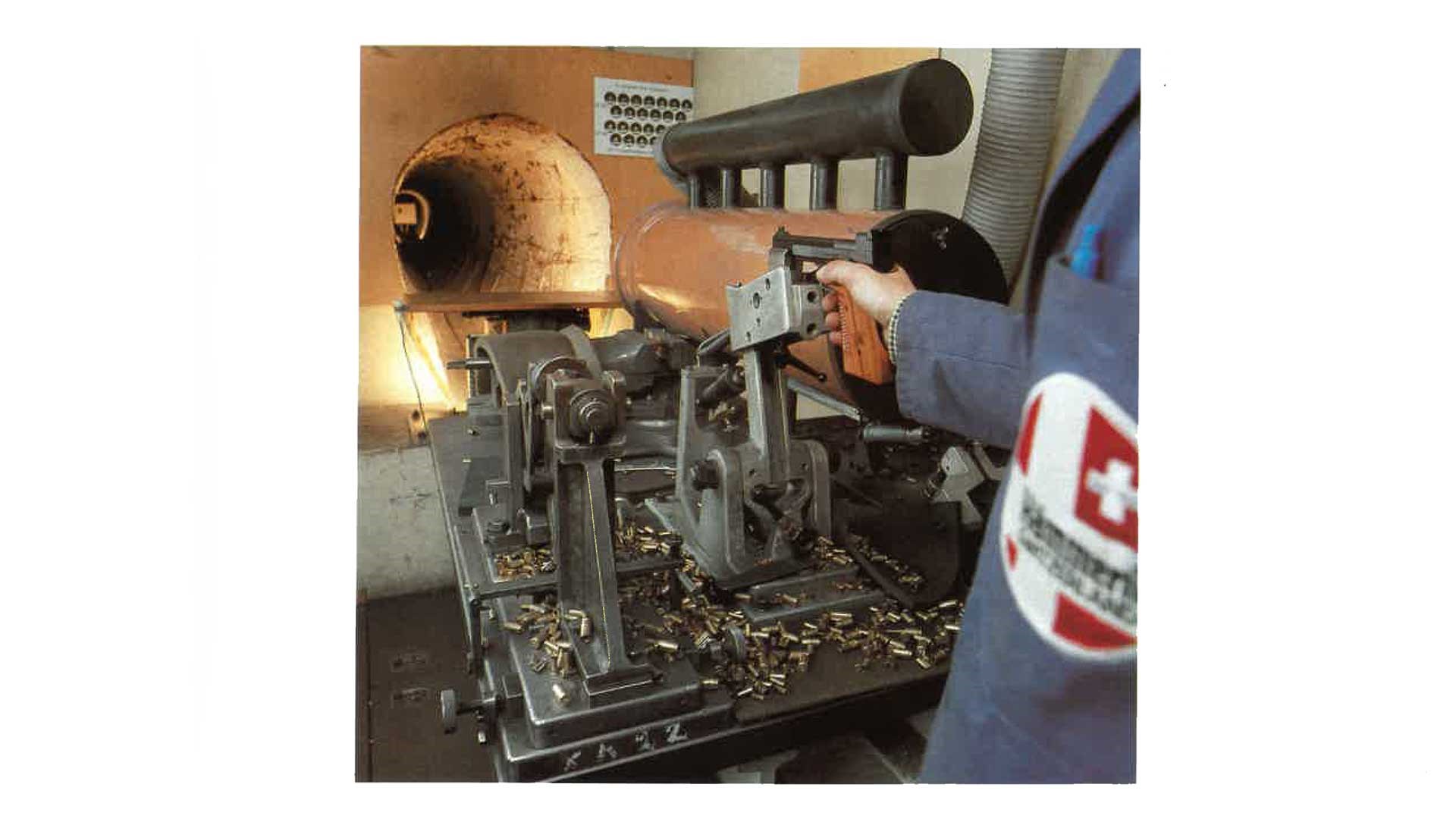 Hammerli test-fired every pistol produced at its Switzerland factory, ensuring it was up to match standards.
Hammerli test-fired every pistol produced at its Switzerland factory, ensuring it was up to match standards.
Notably, the Model 150 incorporated a new set trigger capable of being user-adjusted for a pull weight ranging anywhere from 5 grams to 100 grams, roughly 0.18 oz. to 3.5 ozs. Ignition time was tightened, measuring just 0.0016 of a second, with a firing-pin travel distance of 6 mms. Thanks to the free-floated barrel, an accuracy guarantee of 20 mms at 50 meters was guaranteed, assuming 10 rounds fired from a machine rest. Total weight of the pistol was just over 42 ozs., with extra weights able to bring that number up to just under 50 ozs. An electronically fired variant of the gun, the Model 152, was also developed, shortening lock time and providing an extremely consistent trigger pull, especially at lower pull weights.
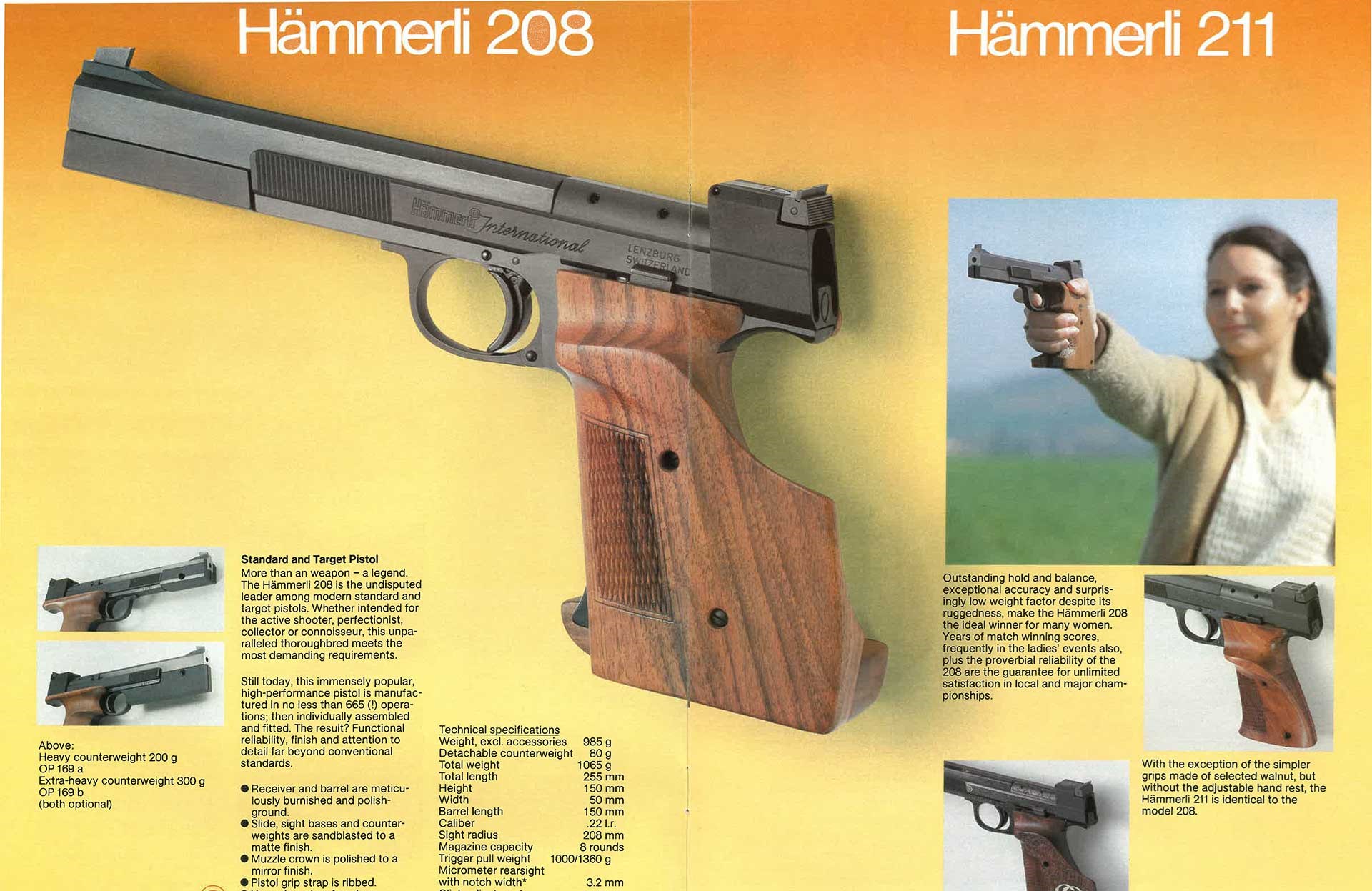
After several decades of licensed production of Walther’s Olympia design, Hammerli refined the basic concept of the Olympia into its International line of semi-automatic competition guns. Separated into several models, depending on select features, the International line would carry Hammerli into the 21st century. The Model 208, still made in Lensburg, Switzerland as of the 1980s, was a finely fit and finished firearm, formed from 665 different machining operations. Receivers and barrels featured a burnished finish, and the pistol’s adjustable grips were carved from walnut and featured an oil-rubbed satin finish. Magazine capacity was eight rounds, and the gun offered an adjustable pull weight ranging from 1,000 to 1,360 grams. A similarly outfitted Model 211 featured a more conventional grip for the casual target shooter, while the Model 215 was billed as a “cost-conscious” option that lacked some of the finishing touches of the top-of-the-line 208, yet still functioned identically. A Model 212 rounded out the line as a rimfire “hunting” model, which featured a conventional grip, non-adjustable sights, compact size and an additional safety required by the German Hunting Association.
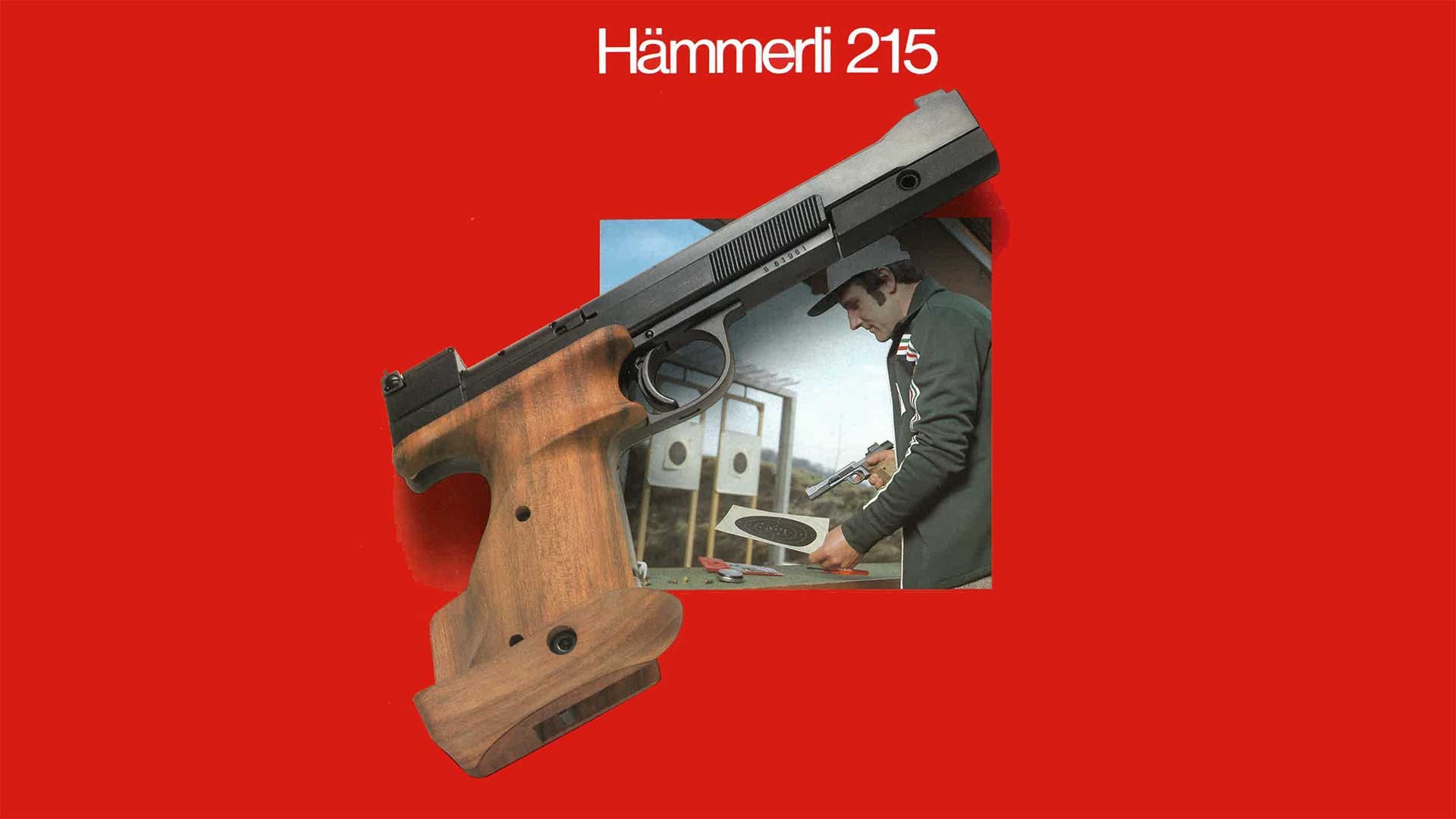
Though these two guns were only a subset of Hammerli’s competition offerings through the 20th century, Hammerli’s Match and International pistols were nonetheless a mainstay in competition and target-shooting circles. In the 1970s, SIG purchased Hammerli in combination with J.P. Sauer & Sohn, forming SIG Sauer. In 2006, Hammerli was sold to Umarex Sportwaffen, which also owns Carl Walther and Rohm Gesellschaft, and production moved to Ulm, Germany. Now, in the United States, the Hammerli name is attached to the Tac R1 22 C, an AR-style rimfire rifle, but the legacy of the Hammerli International can be seen in target models like the Walther CSP Classic. Used Hammerli target pistols are encountered frequently in the firearm market and are known for their fine fit and finish. In recent years, the world of international handgun competition has moved on to newer models, but in the golden era of international arms competition, Hammerli’s handguns held in with the best of them.















